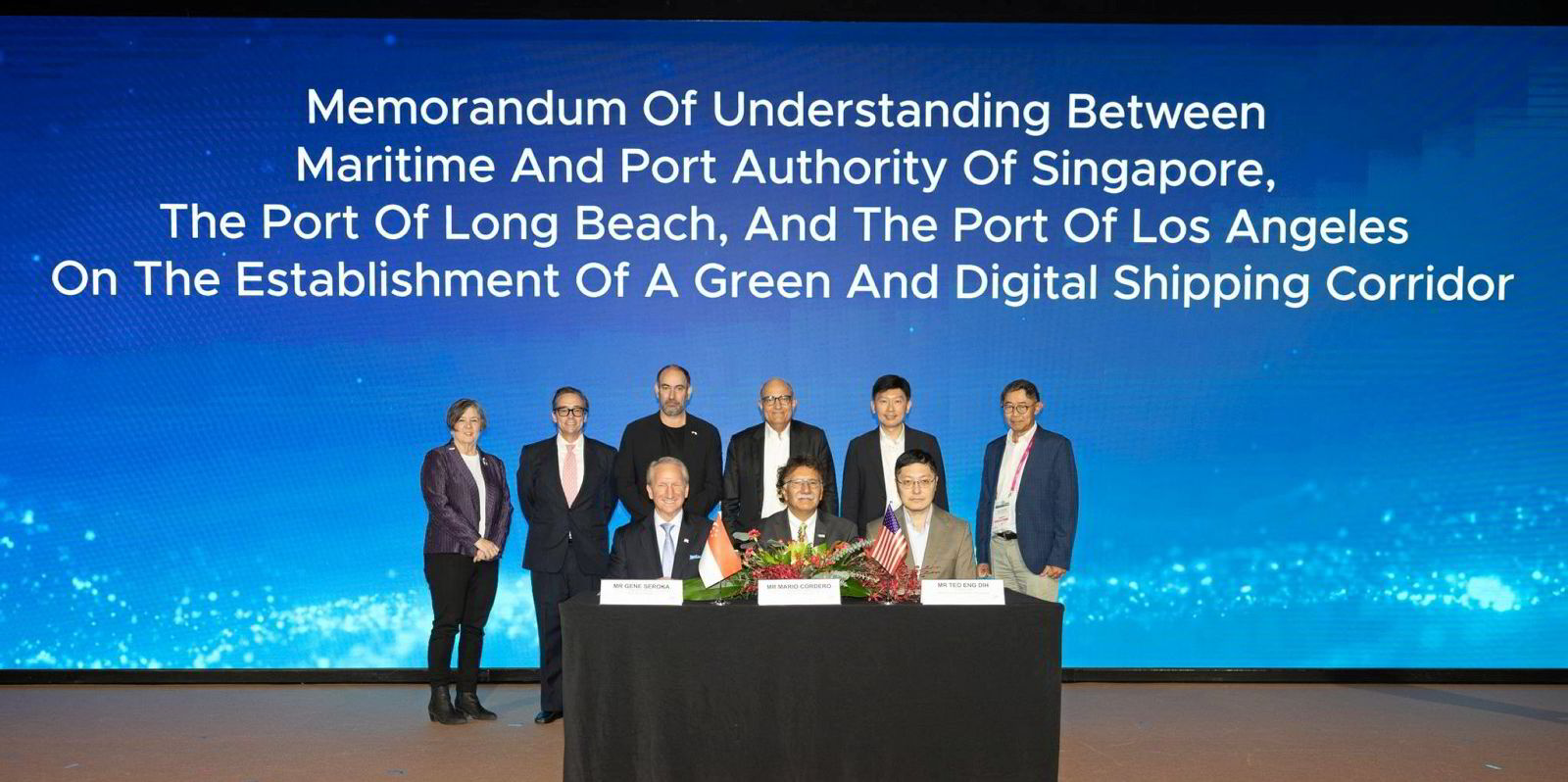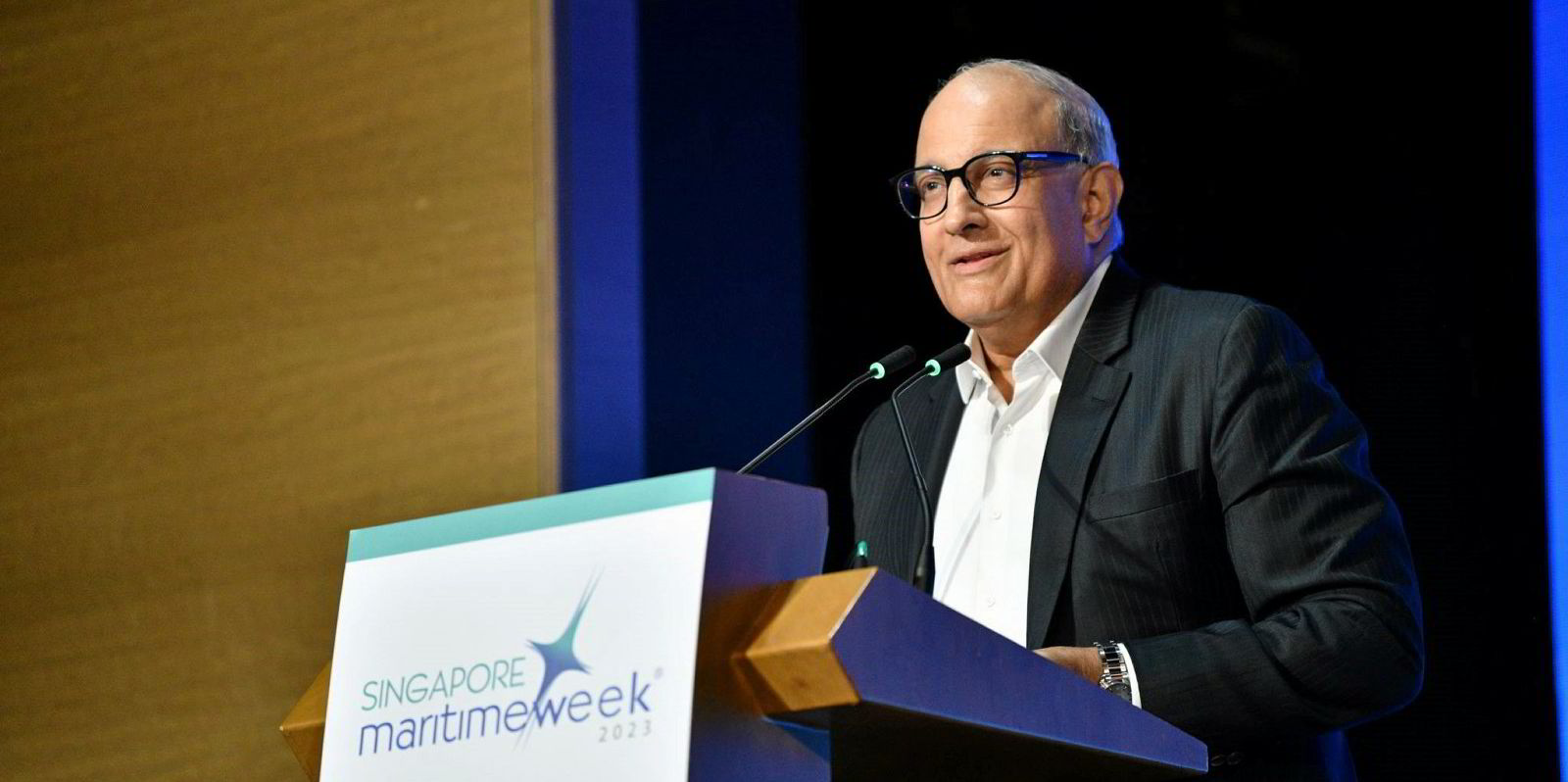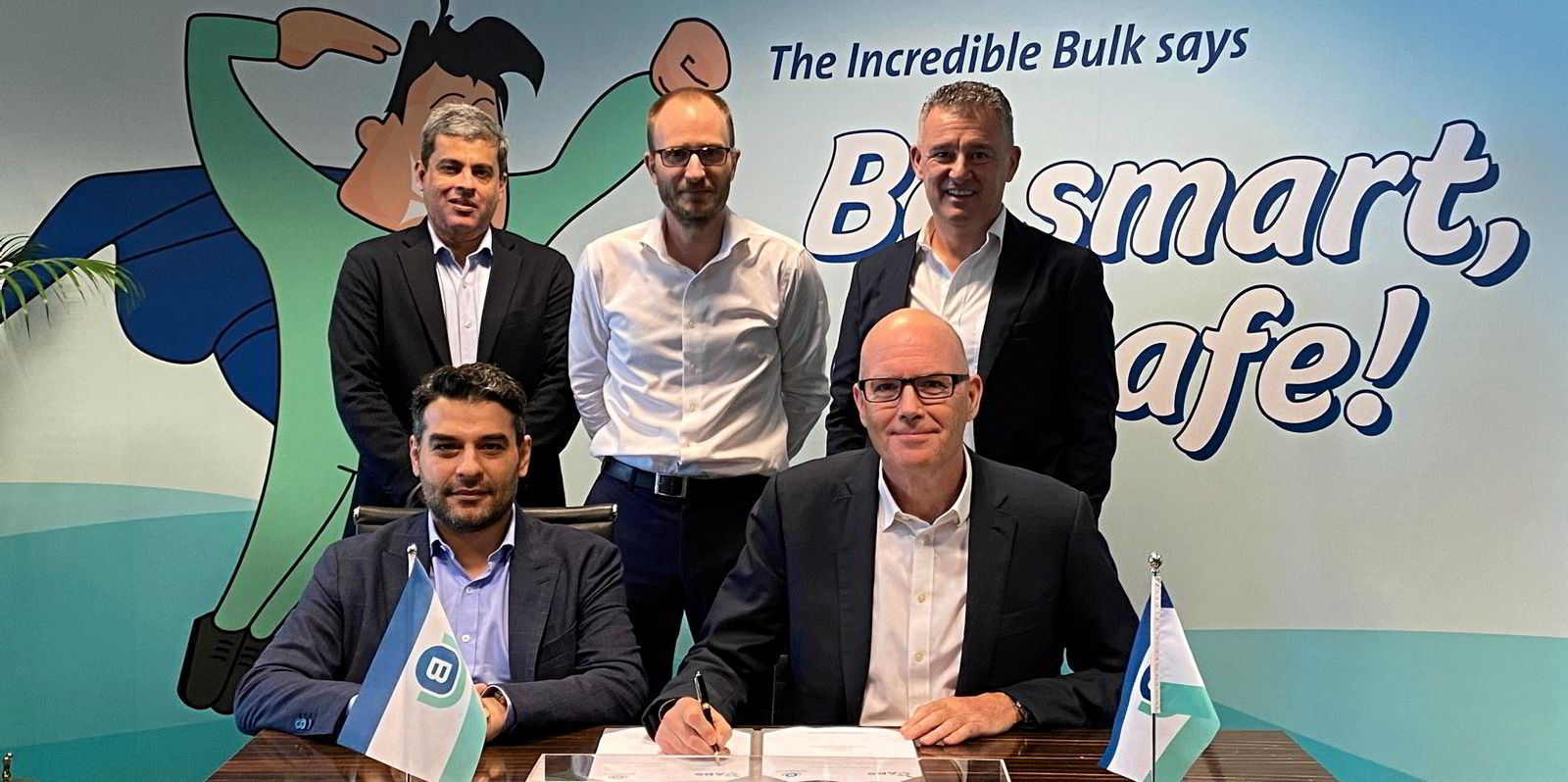Singapore maritime companies are estimated to have spent close to SGD 1.4bn ($1bn) on decarbonisation efforts last year.
The figure was disclosed at the opening ceremony for Singapore Maritime Week on Monday by the city-state’s minister for transport, S Iswaran.
The figure is said to be triple the amount spent in 2021, according to the inaugural maritime census carried out by Maritime & Port Authority of Singapore (MPA).
The census also found that 85% of shipowners and operators by revenue in Singapore track or measure emissions or have a decarbonisation strategy or plans.
“Decarbonisation heralds a profound change for the maritime industry,” the minister told those in attendance.
“The entire value chain, from manufacturers, to the shippers, to the end consumer, must be persuaded of the value of going green, must be prepared to bear the cost and be prepared to act quickly.
“The process may span several decades, but the work must start now,” he added.
Iswaran said there were signs of “growing momentum”, which he described as “encouraging”.
“For example, in the second half of 2022, nearly half of all container ship orders were for methanol-capable vessels, and the first such ship was launched earlier this month,” he said.
In Singapore, he said 140,000 tonnes of marine biofuel blends were sold to vessels in 2022, far surpassing LNG bunker sales, and a higher take-up is expected this year.
“Later this year, we will conclude the expression of interest for ammonia bunkering and power generation, and conduct our first methanol bunkering pilot,” he said.
At the global level, Iswaran said the International Maritime Organization was a “key catalyst” for maritime decarbonisation, and that Singapore had been a “steadfast supporter of its efforts”.
He said Singapore supports a “significant strengthening” of the level of ambition for 2050 under the revised greenhouse gas strategy currently being worked on by the IMO.
“This is in line with our support for international shipping to do its part, to help keep the Paris Agreement global warming target of 1.5C within reach,” he said.
“We stand ready to work with member states to revise the ambition of the initial strategy and achieve a mutually agreed outcome by July 2023.”
Iswaran said Singapore has also been actively promoting decarbonisation partnerships at the port-to-port level.
“In August 2022, MPA established the world’s longest green and digital shipping corridor (GDSC) with the Port of Rotterdam,” he said.
“Since then, both sides have been studying the feasibility of different net zero fuel pathways for the Singapore-Rotterdam shipping route, including biodiesel, methanol, ammonia and hydrogen.
“We have also welcomed several new stakeholders, such as Yara Clean Ammonia and the Nanyang Technological University Maritime Energy and Sustainable Development Centre of Excellence.”
Monday also saw Singapore sign a memorandum of understanding with the Port of Los Angeles and the Port of Long Beach to establish its second GDSC.
“This GDSC, which is supported by C40 Cities, will accelerate the decarbonisation of international shipping along the critical transpacific trade lane,” he said.
“This GDSC complements existing bilateral initiatives between Singapore and the US, such as the US-Singapore climate partnership, and the US-Singapore partnership for growth and innovation.”






